Pesticides play a vital role in food production. So do they really deserve their tarnished public image? Sarah Houlton investigates
Pesticides play a vital role in food production. So do they really deserve their tarnished public image? Sarah Houlton investigates

If we are to be able to feed the world’s growing population in the future, then pesticides will play a vital role. ‘Pesticides are the “medicines” we have to fight against diseases, insects, and competing weeds that steal nutrients and water from the crops,’ says Friedhelm Schmider, director general of the European Crop Protection Association based in Brussels, Belgium. ‘The difference is that humans take medicines into their bodies to kill bacteria or viruses, but for crops they must be sprayed on the landscape.’
There is a real worry that we will be unable to keep up with the increased pressure on global food production. With an increase in world population of 2.5 billion predicted by 2050 – about a third more than the current figure – we will need to be more productive with available resources. The supply of agricultural land is limited, and water availability is another concern.
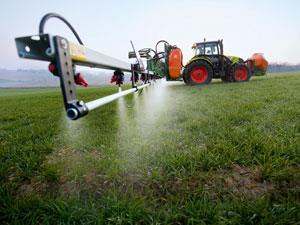
‘If we could apply the best available technology to existing arable land, we could be able to double or even treble yields tomorrow,’ says Ray Elliott, head of open innovation at agrichemical company Syngenta. But demand is changing and increasing, he says, with the very large populations in countries such as India and China becoming more affluent and desiring a diet with more meat. ‘A kilo of beef takes about 7–8kg of maize to produce, it’s about 5kg for pork, and 2-3kg for chicken. A vegetarian diet would, in some ways, save the planet!’
About 13 billion hectares of the world’s surface is land – the rest is water. ‘At the moment, we farm about 1.5 billion hectares, much of it using crop protection chemicals,’ Elliott says. ‘If you remove those chemicals, 4 billion hectares would have to be ploughed to get the same productivity. This would take out all of the grassland and prairies – but much of this is used for grazing cattle. If you could maximise the productivity of that 1.5 billion hectares, more crops could be produced, leaving the ecosystems in the grassland, prairies, forests and deserts alone to flourish. I find that a very powerful argument [for pesticide use].’
Increasing biodiversity
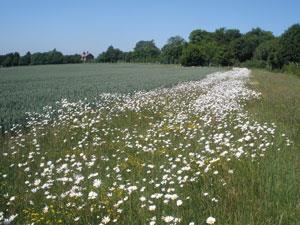
But what do pesticides mean for biodiversity? ‘Pesticides can definitely save land, leaving land for natural habitats, and areas in the fields can be left for nature protection to increase biodiversity,’ Schmider says. There is a perception, he believes, that ‘conventional’ production means using a lot of pesticides, whereas ‘organic’ production uses none. ‘This is not so,’ he says. ‘Both need pesticides in some form to fight against diseases, weeds and insects, but with organic production much more land is used, leaving less available for habitats for nature protection.’
The big crop protection companies are working on a variety of schemes to increase biodiversity in agricultural land, including Syngenta. ‘In a field on our farm at Jealott’s Hill [in Berkshire, UK], the farmer sowed wild flower mixes in strips around the edges, and in a boggy patch at the bottom,’ Elliott says. ‘While this took out about 9% of the land from production, the yield only dropped by 2%. By creating these margins, the biodiversity increases significantly, without losing much crop production.’
Legislative concerns
Recent changes to European pesticide legislation moved away from a primarily risk-based assessment – hazard multiplied by exposure – to a simple hazard-based system. ‘If a pesticide is carcinogenic, mutagenic or reprotoxic, you cannot register it,’ says Elliott. ‘Many chemicals have these effects at very high doses, but they are taking neither dose nor benefit into account. There is a lack of sound science, with policies framed around hazard rather than risk.’
The tale of the endocrine disruptors is a case in point, he says. In the mid-1990s, there was a lot of concern about men’s sperm counts dropping. Fish placed in cages below the outlets of water treatments works were changing from male to female, and the thought was this tied in with a feminisation of men. The phrase ‘endocrine disruptor’ was coined, and residues such as pesticides in the water were blamed.
'After LC-MS/MS [liquid chromatography-tandem mass spectrometry] was introduced about five years later, they found three compounds that correlated beautifully with the oestrogenic effects – oestradiol and oestrone from menstruating females, and ethinyl oestradiol from the pill,’ Elliott says. ‘It had nothing to do with pesticides, but there was no publicity as it was too difficult politically, and Reach and the new pesticide legislation both call for a ban on endocrine disruptors. Farmers are worried about a possible ban on triazole fungicides, responsible for 40–50% of the cereal yield in Europe. This would have a huge impact on food security in Europe. Yet they are actually antiestrogens!’
Europe is now backing itself into a corner with legislation that hamstrings our ability to grow food productively, says Bayer spokesman Julian Little. ‘While “producing more with less” has become a buzz phrase, increasing pesticide legislation means there are fewer available,’ he says. ‘Europe has some of the most flexible, innovative farmers in the world, and we have a fantastic climate to produce high quality food at an affordable price, yet we seem to spend a lot of effort ensuring we fail.’
The plight of the less popular
So is there sufficient research into new pesticides, or are companies discouraged because of public backlash, or the difficulty of getting new products onto the market? Bugs are good at developing resistance, and this is also true of insects, fungi and even weeds. There is thus a great need for continued innovation in the crop protection space.
Schmider cites the number of active ingredients remaining in the EU as a real problem. ‘We are definitely running out of solutions,’ he says. ‘We do not have enough modern active ingredients to solve problems around pests and diseases.’ It’s a particular problem for minor crops – not obscure products, but common crops such as fruit and vegetables grown in smaller volumes than those such as maize and wheat.
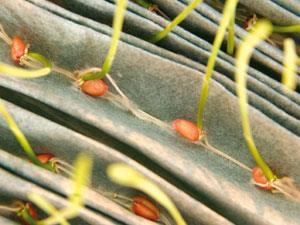
It’s one thing developing a herbicide for big crops, but what about, say, sugar beet? The chemistry of sugar beet herbicides is very old, but creating a new herbicide specifically for a small crop is not commercially viable. ‘We can’t introduce GM sugar beet in Europe any time soon, but we have developed resistance to our existing herbicide portfolio via non-GM methods,’ Little says.
Chemical innovation
Unlike many companies, Little says, Bayer remains convinced that crop protection is an important part of crop production. ‘Some others have shifted large quantities of their budget into high quality seeds, through new breeding techniques including, but not only, genetic modification,’ he says. ‘While we do work on seeds, of course, we still believe innovation in chemistry is important. But it’s not like the old way when we simply looked for something that kills insects, fungi or weeds. There is an expectation now for much more.’

For example, last year the company launched the fungicide Aviator, based on bixafen, a new class of pyrazole lipid inhibitor that kills fungi in cereals. ‘In trials, farmers noticed crops stayed greener for longer,’ he says. ‘The longer they are green, the more they are photosynthesising, and the greater yield they produce.’ Other fungicides have a similar effect, such as Syngenta’s azoxystrobin.
Then there’s spirotetramat (Movento) which, unlike most insecticides, can be translocated both up and down the plant, allowing it to kill the root-feeding aphids that damage brassicas, as well as those that attack leaves. ‘Not so long ago, products were usually either very good insecticides with negative effects on bees, humans or animals, or they had none of these effects but weren’t very good insecticides,’ Little says. ‘This product is more bee-friendly and has a good toxicity profile. This is what you must deliver now – safety and a focus on the environment as well as effectiveness.’
‘A new active ingredient costs roughly EUR200 million (£160 million) to develop, and takes about 10 years – and you have to be an excellent prophet to know what the world will look like in 10 years,’ Schmider says. ‘Only a few companies and research institutes are able to invest in research for new crop protection chemicals because of the risk. If, say, the environmental behaviour is not good enough, there is the risk of not getting registration. That is a very big risk for a small company.’
It’s all in the delivery
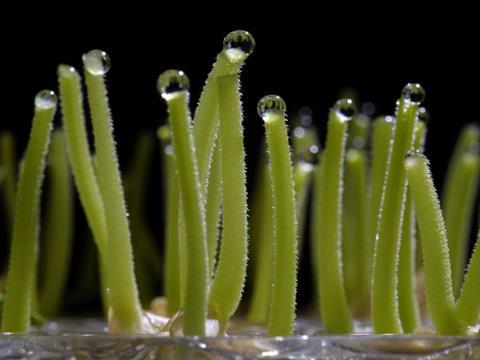
Clever formulation can have a real impact on a pesticide’s effectiveness, and the amount that needs to be sprayed onto crops. BASF, for example, developed polymer technology to release fungicides only when needed – when it rains. ‘The fungicide can be sprayed alongside another treatment earlier in the season, and it sticks to the leaf,’ spokeswoman Elise Kissling explains. ‘When it rains, the polymer shell releases fungicide.’ Formulation technology is also used to enable products to stick to the crop rather than bouncing off onto the soil, making them less likely to get into the water supply.
Seed treatment is also having an impact. By localising the application of pesticides around the seed within the soil, it provides a protection zone as it grows. ‘Protective layers of fungicides and insecticides around it allow the seed to get a good start,’ Elliott says. ‘Just by promoting early root development and leaf expansion, the yield can be improved by 10% on average. As it’s targeted around the seed, it is not being spread around the whole field, so the pesticide load on the field is significantly lower.’
This idea of ‘precision farming’ may sound counterintuitive – companies are encouraging farmers not to spray as much of their products – but Little says it makes a good deal of sense. ‘Overspraying is not a good idea, either for the crop or the environment,’ he says. ‘A farmer needs enough to do the job, but the absolute minimum. Fewer problems are caused, so regulators are less likely to impose restrictions. While there may be a tiny hit on the business in the short term, ultimately it will be more sustainable.’
Coming together
Companies are also looking further into integrated solutions. ‘I think this is going to be a game-changer,’ Kissling says. ‘We have services that hook up, for example, a disease detector with a weather map, and farmers report pest and disease problems online. Others can then see when, say, a fungal disease such as soybean rust occurs and how fast it’s spreading, so they spray at exactly the right time, and use less. This is the future, and is something farmers want from us.’
Schmider is clear that farmers and growers need to be trained in the safe use of crop protection chemicals. ‘Of course pesticides have biological effects, and there may be biological side-effects, especially when they are not used properly, just like with medicines,’ he says. ‘There are big programmes in Europe to educate and train farmers to use pesticides in the right way, and avoid risk to the environment and human health.’ Similarly, many companies offer stewardship and training programmes across the globe, especially in the developing world.
His dream is that the industry will be seen as part of the solution by the public. ‘Having affordable and sufficient food available, taking care of consumer health and protecting the environment are all essential for the future,’ he says. ‘We need to get the message across to the public that we’re not the bad guys – our planet is not growing with the population and we have to produce more from less. If diseases kill half of the crops that’s a real waste of limited natural resources. We need to address public concerns, and hopefully do better tomorrow than we did in the past.’
Sarah Houlton is a science writer based in Boston, US
Bees be no concern
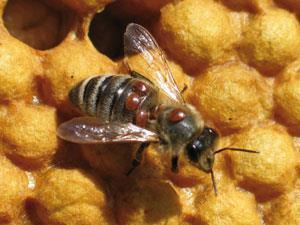
Blame has been heaped upon pesticides for the collapse of the bee colonies, with the apparent culprit improper use of the neonicotinoid insecticide clothianidin by a farmer in southern Germany. The European Crop Protection Association’s Friedhelm Schmider says a combination of poorly applied seed treatments and windy conditions combined to affect local bee colonies. ‘This isolated incident was used to explain the general decline of the bees,’ he says. ‘Two years later, it is clear this pesticide is not the culprit, and if pesticides are used carefully and safely, there should be no problem for the bees.’
According to Bayer’s Julian Little, some neonicotinoids are intrinsically bee-safe, despite calls for a class-wide ban. The trouble with lab experiments on social insects like bees, he says, is the effects are greatly magnified. ‘If you look at bees in hives in the fields, poor bee health in Europe correlates with the presence of parasites, especially the varroa mite, together with viruses and other diseases, but not with the use of any insecticide, let alone neonicotinoids.’
He cites two big controls. Neonicotinoids were restricted in France for a decade from the late 1990s, without any improvement in bee health. Meanwhile, Australia has very healthy bees, despite widespread neonicotinoid use – there is no varroa mite, which is endemic in Europe. ‘The irony is that, traditionally, insecticides were relatively high dose, relatively toxic to humans, and almost invariably killed bees. Neonicotinoids are incredibly safe to mammals, used at a low dose, and controls are in place to minimise any impact on bees. If they are banned, farmers will still need to control insects, and will end up spraying with something less bee-friendly.’
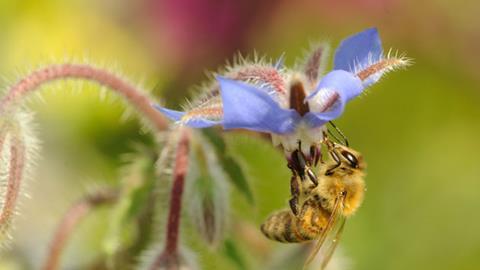












No comments yet